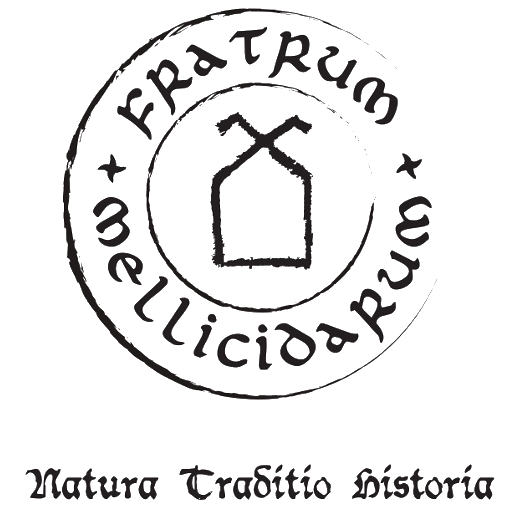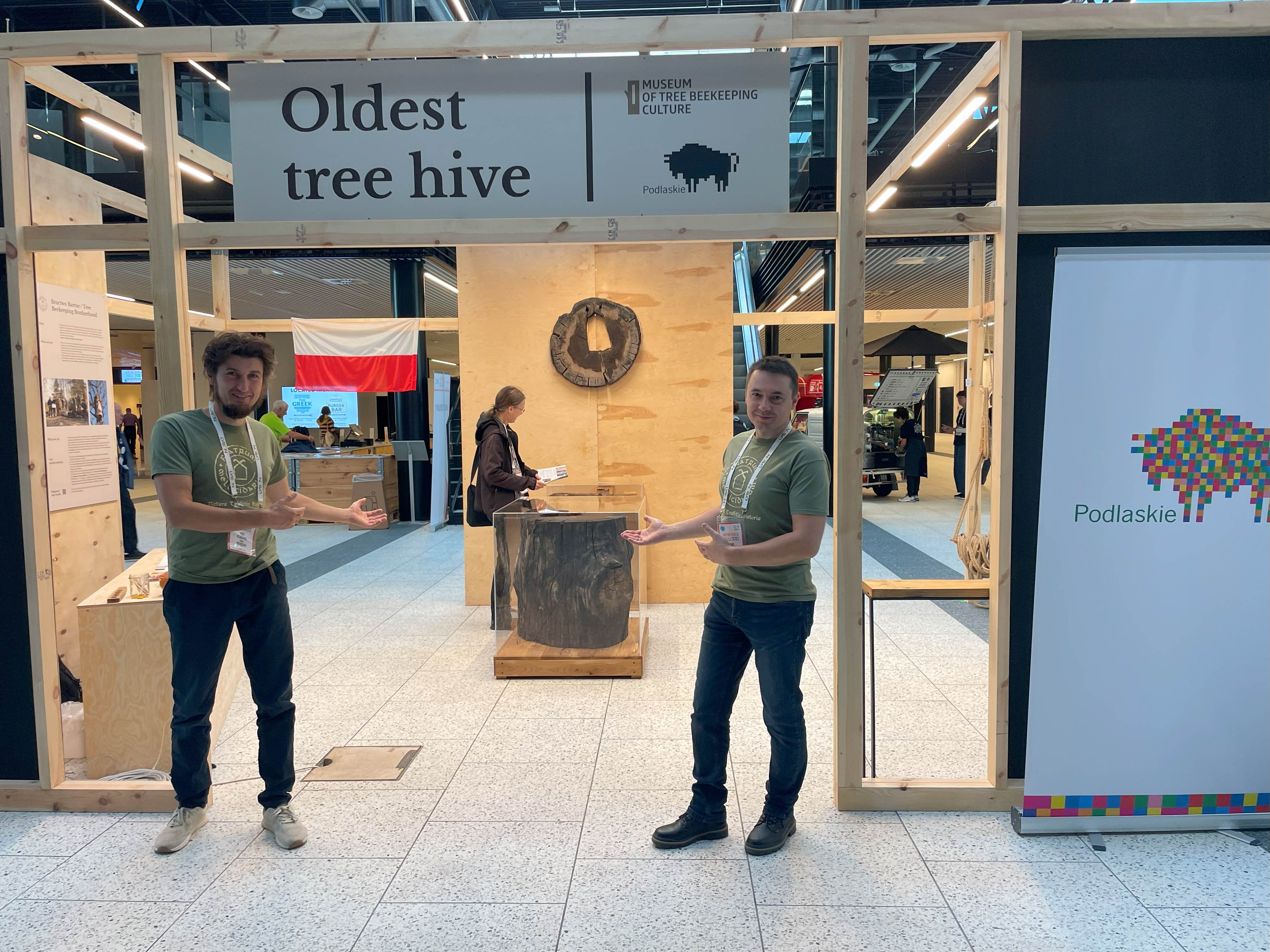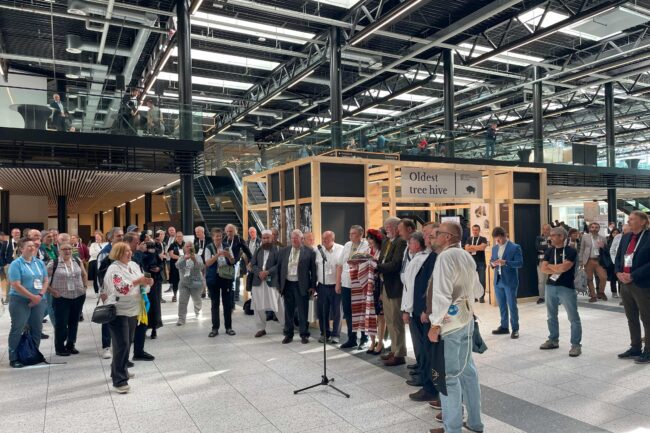Between September 23rd and 27th, 2025, the capital of Denmark, Copenhagen, hosted APIMONDIA, the world’s largest and most prestigious international beekeeping conference. The event, held every two years in a different part of the world—previously hosted in countries such as Chile and Canada—brought together thousands of participants, experts, and enthusiasts from across the globe.
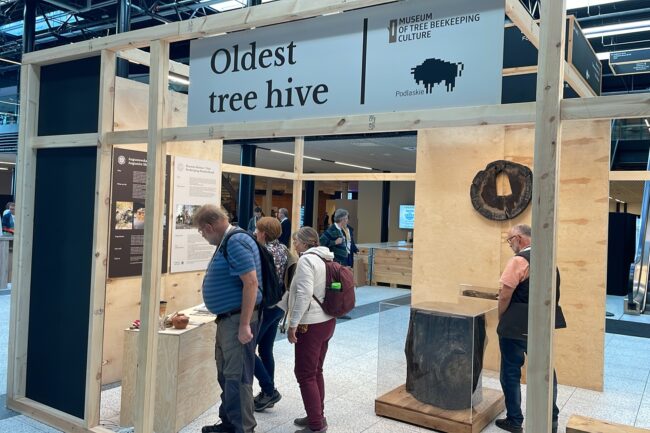
This year, among the numerous exhibitors and researchers, the Museum of Tree Beekeeping Culture (Muzeum Kultury Bartniczej) proudly presented its pavilion, created at the invitation of the organizers. The pavilion’s Strategic Patron was the Podlaskie Voivodeship, a region in northeastern Poland known for its unspoiled nature and deep-rooted beekeeping traditions.
Our Pavilion Rooted in Tradition and Modern Design
Designed by architect Paweł Kotwica, the Museum’s pavilion reflected the essence of Scandinavian minimalism, harmoniously blending simplicity and nature. Located in one of the main public areas of the conference, it became a natural point of interest for visitors.
At its heart stood the pavilion’s centerpiece — a 7th-century forest beehive (barć) containing a perfectly preserved honeybee nest. This extraordinary artifact, belonging to the Bartne Brotherhood of Augustów, is considered the oldest known bee colony preserved to this day.
Around the central exhibit, visitors could see several bees encased in resin, carefully extracted from the ancient hive, as well as a fragment of the original honeycomb. Informational panels explained both the phenomenon of tree beekeeping (bartnictwo) and the range of research already conducted — and those planned for the coming months/years. Other panels introduced the millenia-old beekeeping traditions and the Brotherhood’s efforts to revive them.
The pavilion was adorned with photographs by Professor Krzysztof Heyke, portraying traditional tree beekeepers from Belarus, Lithuania, and Poland at work, and graphic illustrations by Paweł Mikucki from Augustów, depicting the structure and form of ancient tree hives and log hives. The accompanying texts were prepared by Dr. Michał Kolasa and Piotr Piłasiewicz.
he exhibition drew enormous interest—a significant portion of the over 8,000 attendees of this year’s APIMONDIA visited the pavilion to learn more about this living piece of history and intangible cultural heritage.
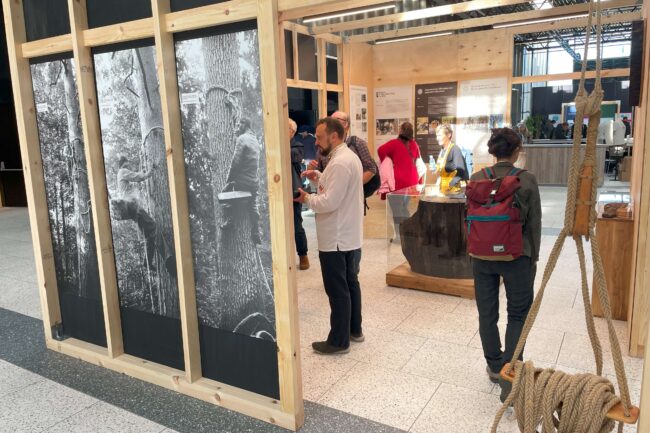
Conversations Across Continents
Over the five days of the event, our team conducted hundreds of conversations, sharing stories about the rediscovery of bartnictwo, the uniqueness of the Augustów region, and the scientific importance of the 7th-century find.
The Brotherhood’s representatives spoke with journalists from BBC Radio, editors of American and Czech beekeeping magazines, Swiss and British YouTube channels devoted to apiculture, as well as Arab honey influencers, professional beekeepers, researchers, tourists, and equipment manufacturers.
Equally valuable were exchanges with Polish and Lithuanian beekeepers, and with community representatives from Kenya, Zambia, and Tanzania, who continue to keep bees in hollowed log hives hung on trees—a living reflection of ancient global beekeeping practices.
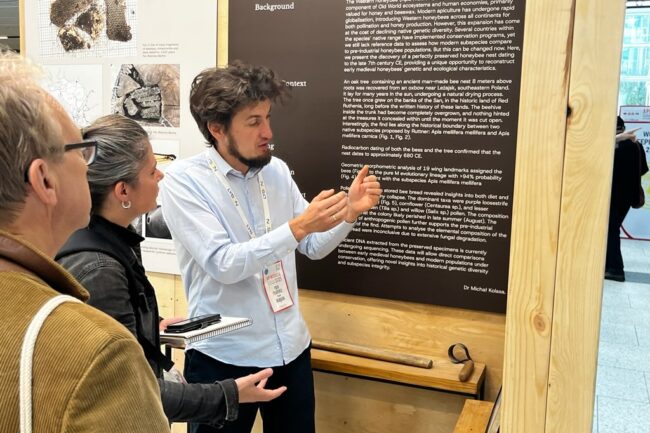
Reviving the Origins of Beekeeping
“It was worth coming here to show the world where beekeeping began—and to remind everyone that these traditions are still alive, especially in our Podlaskie region,” said the representatives of the Bartne Brotherhood. “We hope that the great interest our pavilion attracted will also inspire curiosity about our beautiful and culturally rich region.”
Indeed, the story of tree beekeeping resonated deeply among international visitors. Many were surprised to learn that in the forests of Podlaskie in Poland and in some regions of Lithuaia, Belarus and Ukraine, the ancient art of 'bartnictwo’ is still practiced today, combining ecological values, cultural heritage, and scientific exploration.
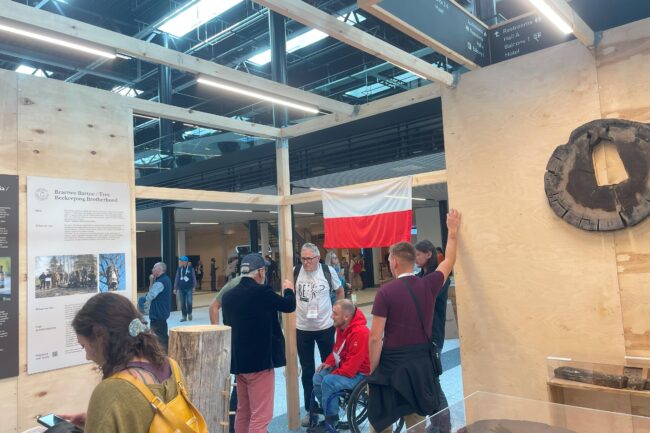
Poland at APIMONDIA 2025
Polish representation at APIMONDIA 2025 was remarkably strong. Numerous Polish companies took part in the trade fair section, presenting innovations and technologies from one of Europe’s most dynamic beekeeping sectors. Poland remains the largest producer of beekeeping equipment in the European Union, and the event highlighted both the modernity and tradition of Polish apiculture.
Acknowledgments
The Podlaskie Voivodeship served as the Strategic Partner of the Bractwo Bartne Pavilion during APIMONDIA 2025. The Brotherhood and the Museum of Tree Beekeeping Culture express their deep gratitude for the support that made this international presentation possible.

More details on email and questions: fundacja@bartnictwo.com
by phone:
0048 601 542 516


